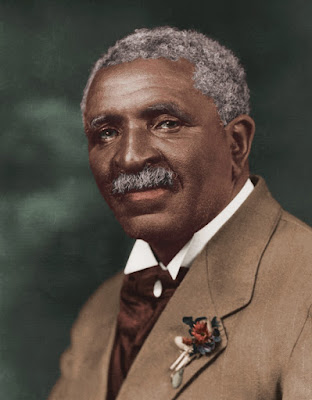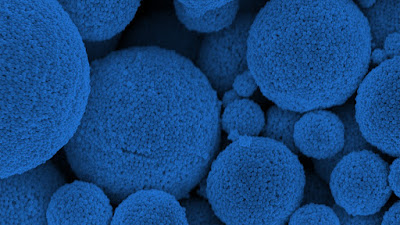 |
| Professor George Washington Carver, Tuskegee University, History.com |
Topics: African Americans, Biology, Diversity, Diversity in Science, Nanotechnology
Part of being in nanotechnology is you get to exercise a bit of creativity and invention. Research is about looking into an area that people know something about, reading a LOT of papers and formulating your own ideas about an approach to a subject. You may either fail miserably at first, or successfully bring about something novel.
George Washington Carver I'm referring to as a proto nanotechnologist. Planting peanuts, soy and sweat potatoes replaced nitrogen other plants like cotton leached from the soil. Though this crop rotation method (introduced by Carver) gave the farmers high yields on the produce they were used to selling, it had the unintended consequence of giving them a surplus of produce for which, there had previously been no market. Carver would go on to invent 300 uses for the peanut, one of which, peanut butter he surprisingly DIDN'T, though I'm sure you've eaten unless you have allergies. If it weren't for him, the farmers in the south would have gone out of business due to a boll weevil infestation that decimated cotton throughout the south. It was a fortuitous confluence of events.
It is in this spirit and the month, I salute Professor George Washington Carver, and hopefully emulate him in my chosen field of making meaning of small things.
George Washington Carver was an agricultural scientist and inventor who developed hundreds of products using peanuts (though not peanut butter, as is often claimed), sweet potatoes and soybeans. Born an African American slave a year before slavery was outlawed, Carver left home at a young age to pursue education and would eventually earn a master’s degree in agricultural science from Iowa State University. He would go on to teach and conduct research at Tuskegee University for decades, and soon after his death his childhood home would be named a national monument — the first of its kind to honor an African American.
Born on a farm near Diamond, Missouri, the exact date of Carver’s birth is unknown, but it’s thought he was born in January or June of 1864.
Nine years prior, Moses Carver, a white farm owner, purchased George Carver’s mother Mary when she was 13 years old. The elder Carver reportedly was against slavery, but needed help with his 240-acre farm.
When Carver was an infant, he, his mother and his sister were kidnapped from the Carver farm by one of the bands of slave raiders that roamed Missouri during the Civil War era. They were sold in Kentucky.
Moses Carver hired a neighbor to retrieve them, but the neighbor only succeeded in finding George, whom he purchased by trading one of Moses’ finest horses. Carver grew up knowing little about his mother or his father, who had died in an accident before he was born.
George Washington Carver, Editors, History.com
